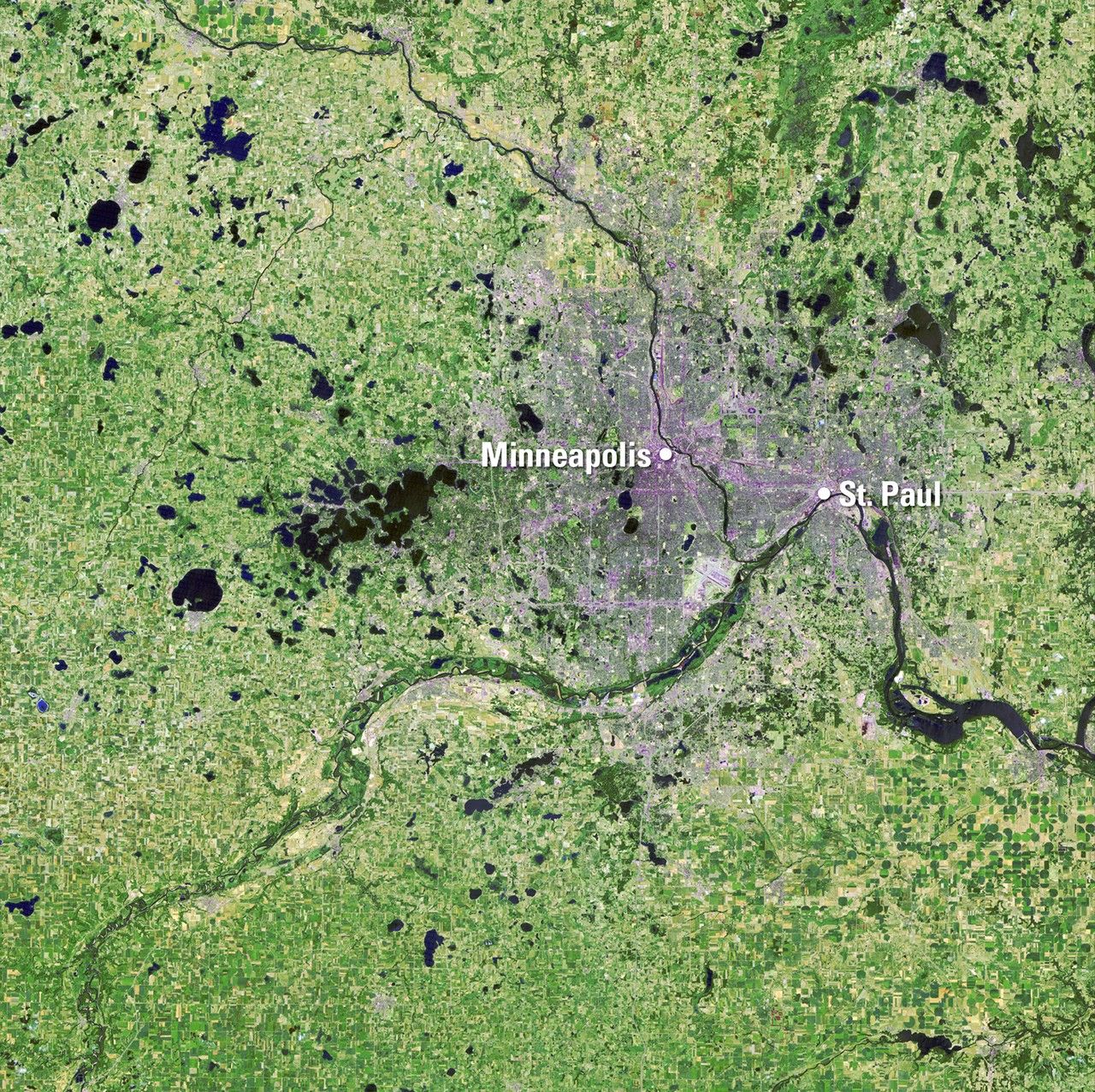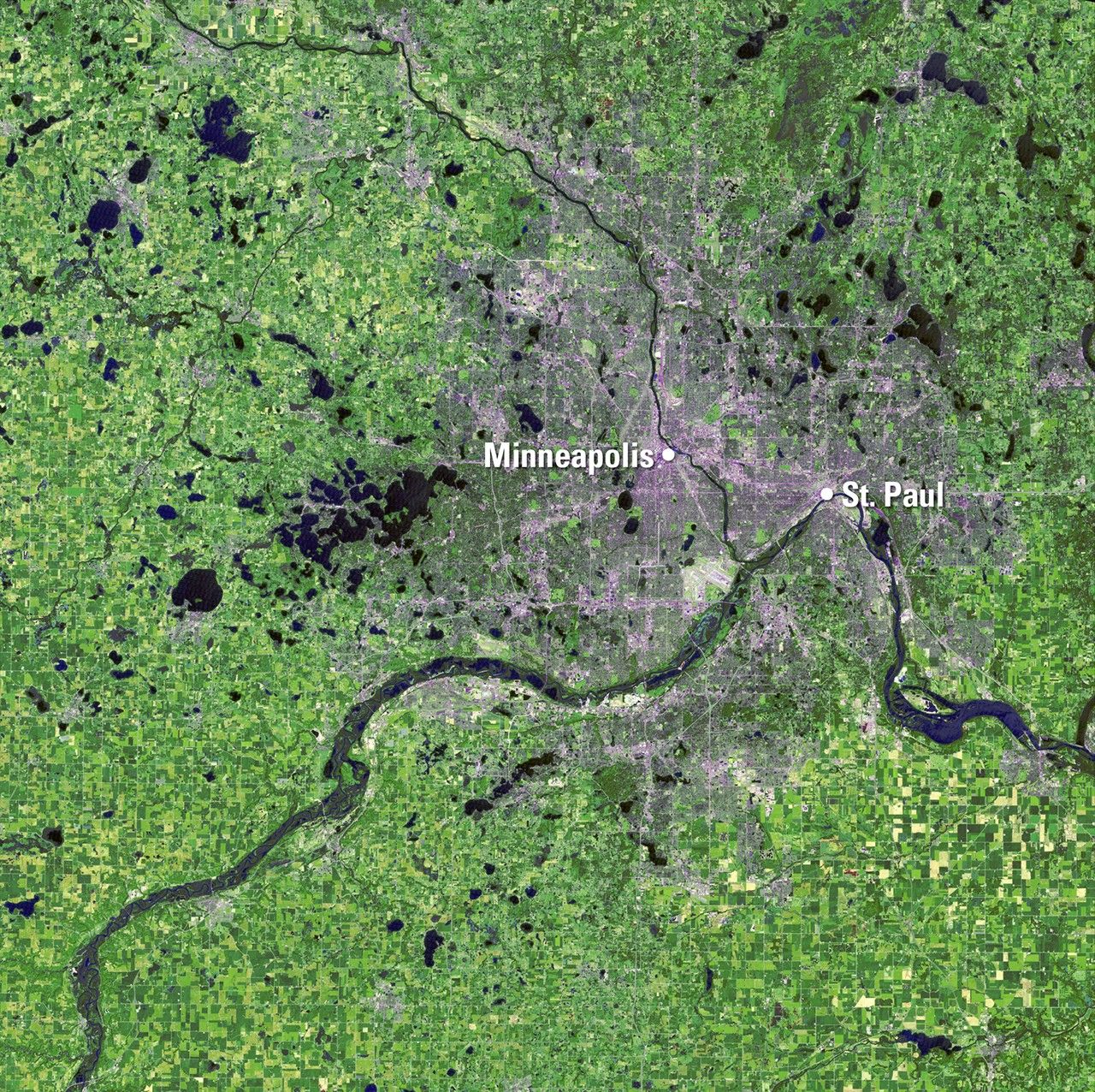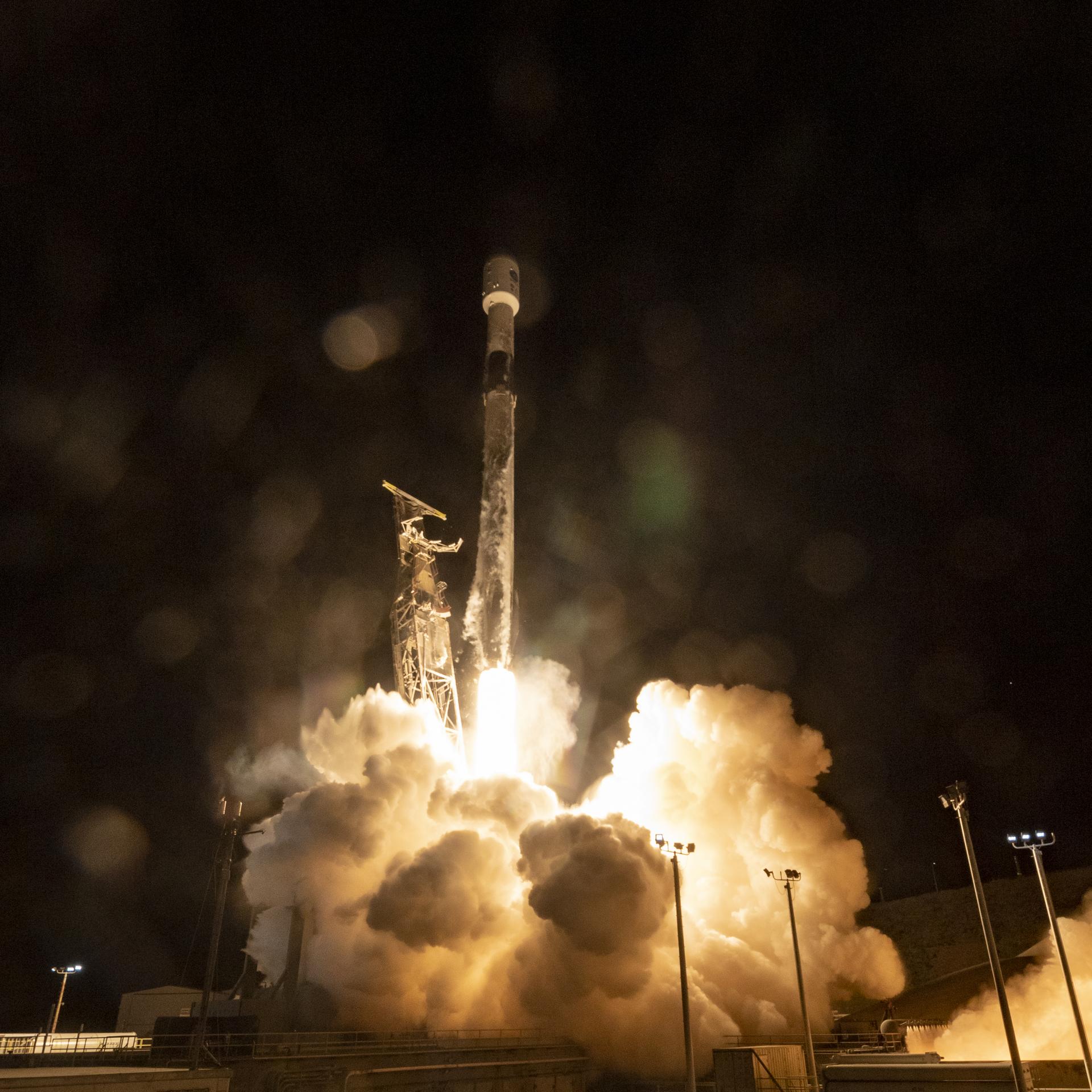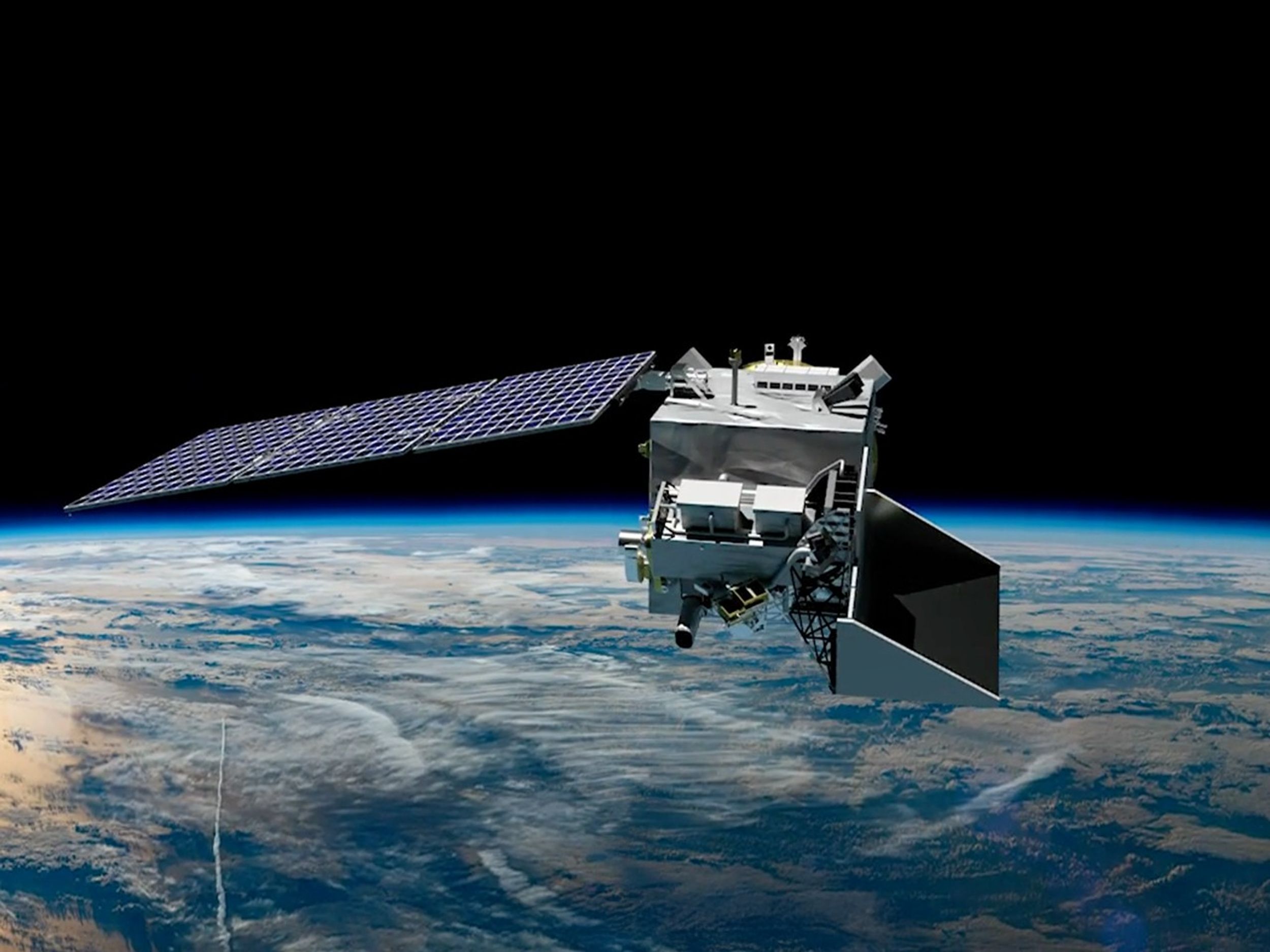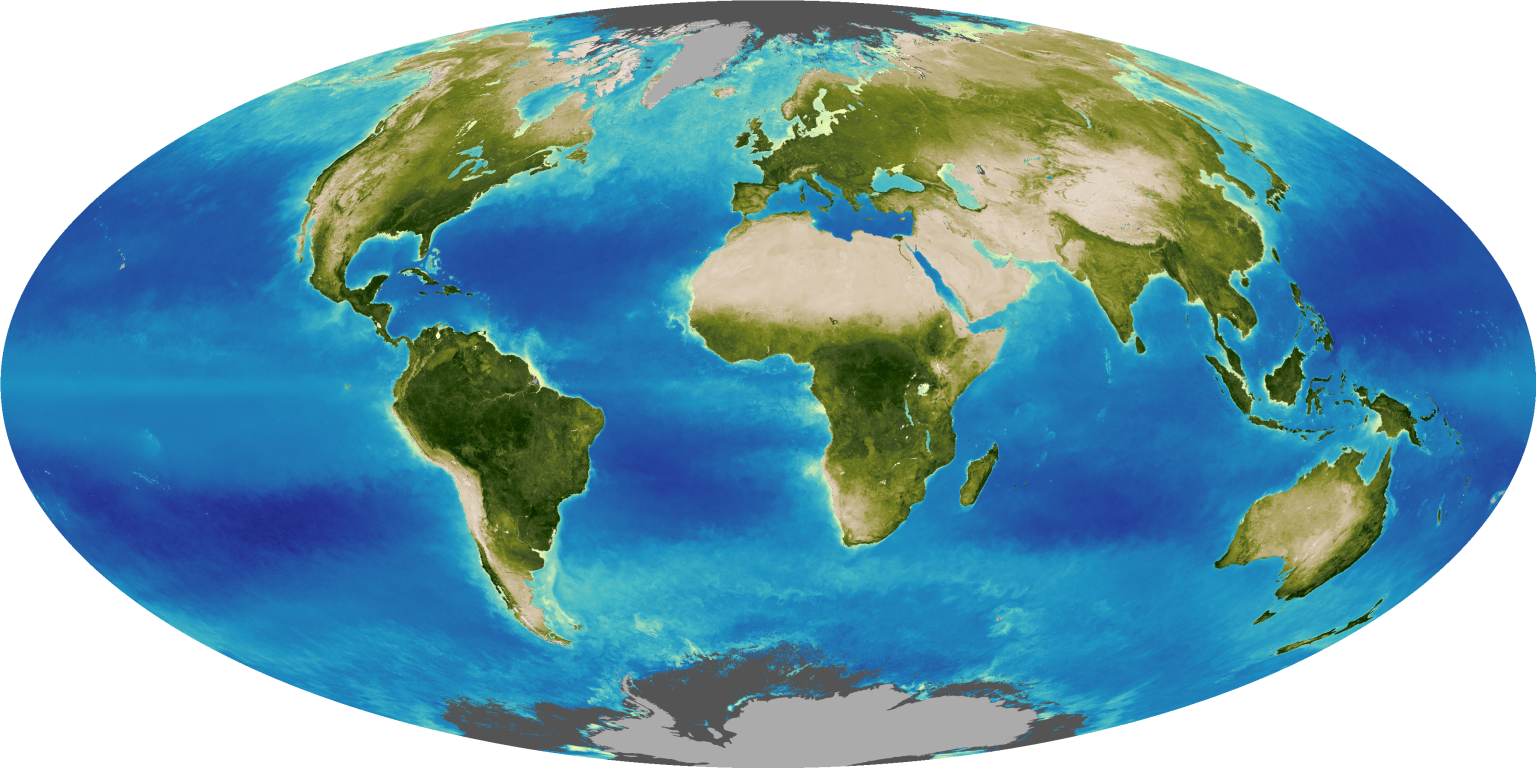

Before and After
Twin Cities growth, Minnesota
July 25, 1988 - July 25, 2011
In the 1950s and 1960s, automobile plants and grain mills dominated the economy of "twin cities" Minneapolis and St. Paul. The population of the greater Twin Cities area, including 334 smaller cities and townships, was approximately 1.5 million. As the local economy transitioned to high-tech, finance and information-technology industries, many people moved to the suburbs for retail jobs and lower living costs. The suburbs grew together and by 2011, the population of the "Greater Twin Cities" had grown to some 3.7 million. Improved transportation facilitated the growth. Planners and commercial analysts use satellite data to plan future transportation options and ways to accommodate the increased demand for services. Images taken by the Thematic Mapper sensor onboard Landsat 5. Source: U.S. Geological Survey (USGS) Landsat Missions Gallery "Urban Growth: The Minnesota Twin Cities," U.S. Department of the Interior / USGS and NASA.




























